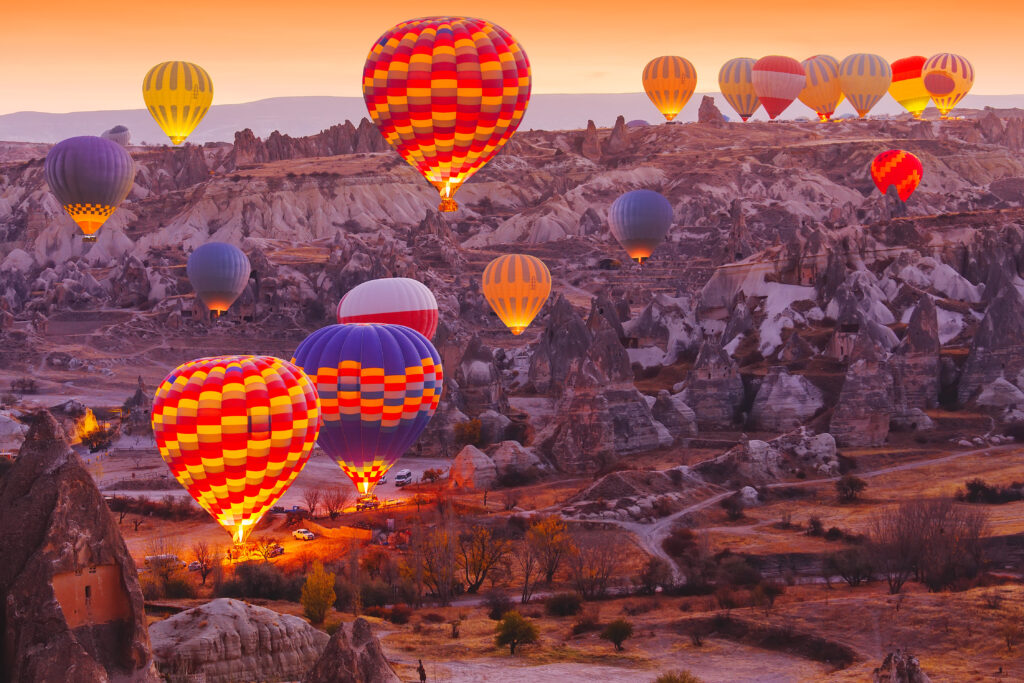
Born of the eruption of the Erciyes, Hasan and Göllüdağ mountains two million years ago, Cappadocia is a veritable geological gem. Volcanic debris, sculpted by erosion, has shaped a fairytale landscape unique in the world. This lunar landscape is characterized by rolling hills, sheer cliffs, deep canyons, iconic fairy chimneys and winding rivers. The rocks, in soft pastel hues of pink, yellow and white, offer an enchanting visual spectacle. Tuff, a volcanic rock that's easy to excavate, has given rise to thousands of troglodytic dwellings and rock churches, testifying to the ingenuity of the ancient communities that found refuge here. Today, Cappadocia can be explored on foot, on horseback or by bike, allowing visitors to fully immerse themselves in its dreamy landscapes.
In this article, we present 16 must-do activities to make the most of this extraordinary region.
1. Hot-air ballooning in Cappadocia: an absolute must
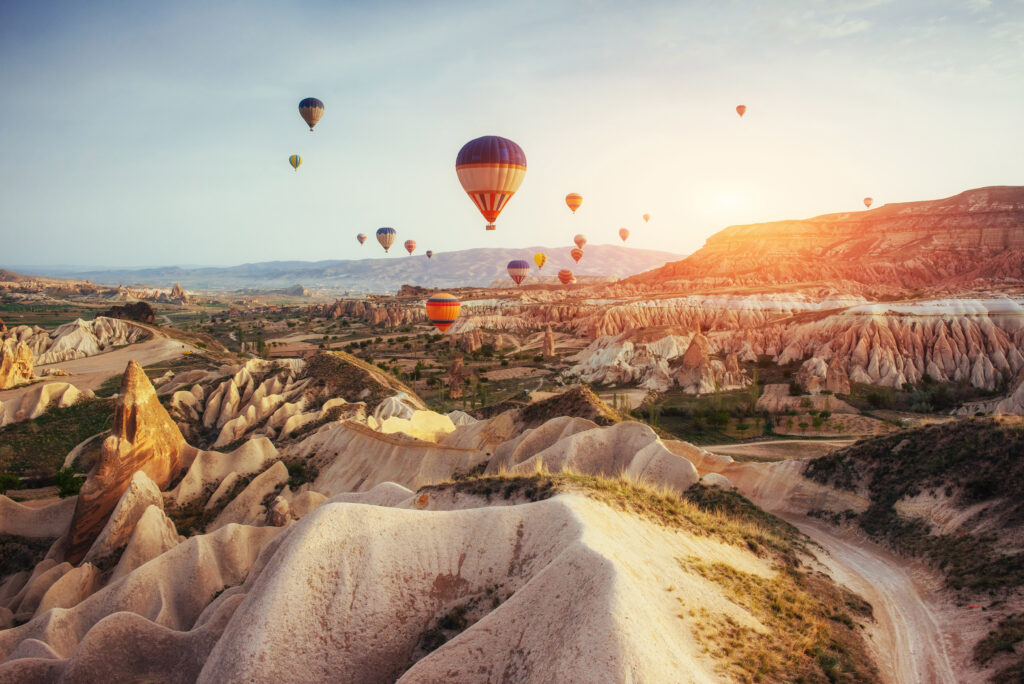
Cappadocia is world-famous for its hot-air balloon flights, offering spectacular views of its unique landscapes. The main departure points for balloon flights in Cappadocia are Göreme, Ürgüp and Uçhisar.
- Göreme is the most popular hot-air ballooning destination. Located in the heart of Cappadocia, Göreme offers breathtaking views of fairy chimneys, valleys and rock formations.
The most popular option with travelers: we recommend this sunrise hot-air balloon flight to Goreme to see the fairy chimneys from a unique vantage point!
- Ürgüp, another central Cappadocian town, also offers hot-air balloon flights with panoramic views of the surrounding countryside.
- Uçhisar, known for its rocky peak and troglodyte dwellings, is another starting point for balloon flights, offering unique perspectives on the region.
These locations are well-equipped to welcome tourists and offer high-quality ballooning services. Flights are usually organized early in the morning to take advantage of optimal weather conditions and spectacular sunrises.
Did you know? Flying over Cappadocia in a hot-air balloon is one of our our selection of unusual travel activities.
2. Nemrut Daği and the mausoleum of King Antiochus
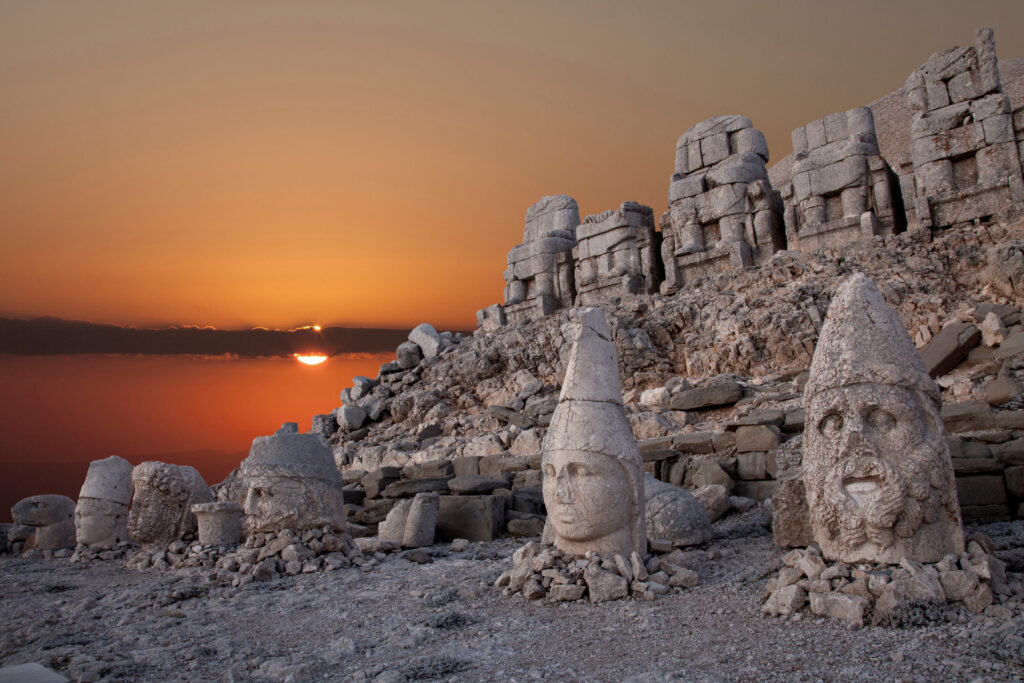
Located 70km southeast of Malatya and 50km north of Kâhta, Nemrut Dağı, also known as Mount Nemrud or Nimrod, is a must-see mountain on your trip to Cappadocia. Part of the Taurus mountain range, it rises to 2,150 meters and dominates the national park of the same name. The mountain is home to the mausoleum of King Antiochus Theos I of Commagene (69-23 BC). Discovered in 1881 by the German Karl Sester and listed as a World Heritage Site since 1987, this tomb is disproportionately large in relation to the importance of his reign. Antiochus Theos I wanted to be close to the gods for his eternal rest, an ambition that may have been pretentious, but certainly succeeded. Please note: the mountain is only accessible during the summer months.
To book: this guided tour allows you to witness the breathtaking sunrise over Mount Nemrut, explore ancient ruins and discover the magic of this UNESCO-listed site.
Read more: What to do in Turkey The 24 most beautiful places to visit
3. Uçhisar, an unforgettable and magical landscape
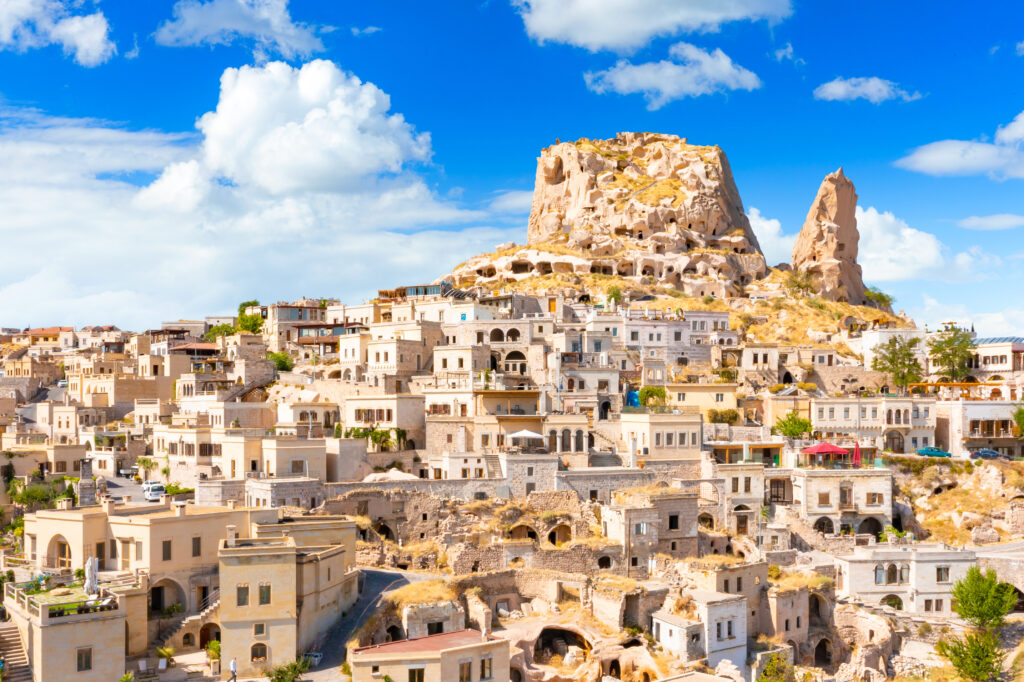
Located 3 km southwest of Göreme, the village ofUçhisar, a UNESCO World Heritage Site, is the highest point in Cappadocia. This spectacular landscape, marked by rocky peaks, mysterious caves and endless fairy chimneys, is both unforgettable and magical. The Uçhisar rock, accessible daily from 8 a.m. until sunset, rises to a height of 60 metres and is pierced by numerous troglodyte dwellings. These dwellings have long been home to the local population. Between its tourist appeal and its authenticity, Uçhisar never fails to surprise visitors.
Activities to book: admire the landscapes of the Cappadocian valleys by booking this guided horseback ride, which includes transfers to the hotel from Göreme or Uçhisar. You'll enjoy breathtaking views of the fairy chimneys.
Read more: Discover our special itinerary for an in-depth exploration of Cappadocia
4. Hiking in the Amur Valley
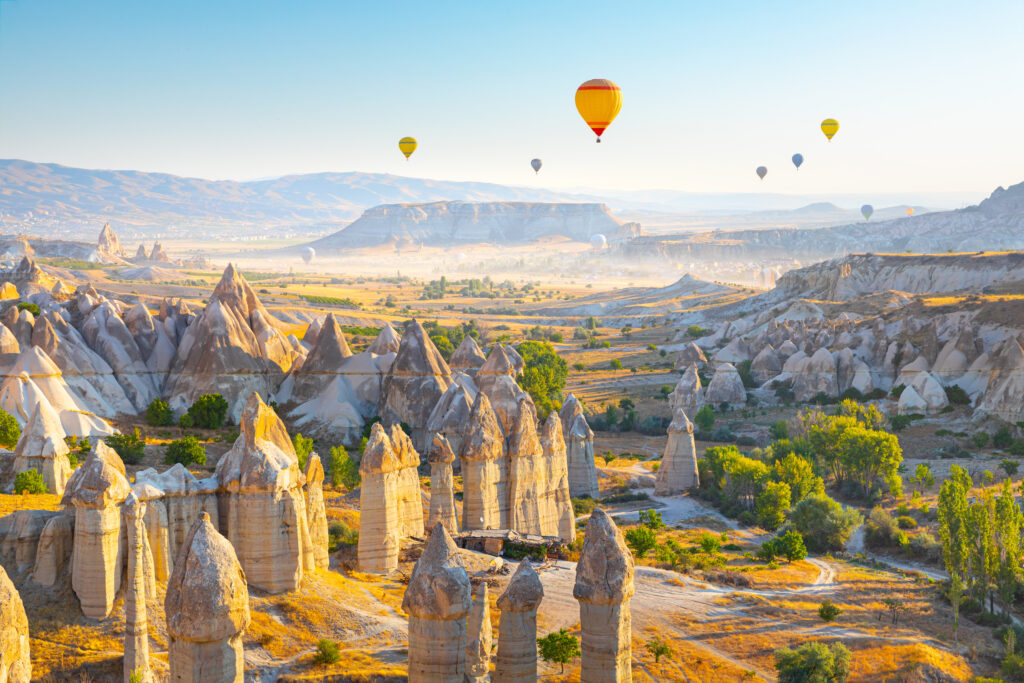
Visiting Cappadocia means discovering unique valleys such as the Vallée de l'Amour. Listed as a UNESCO World Heritage Site, this valley is particularly famous for its numerous fairy chimneys, tall columns set in an immense landscape of beige hues. The Amur Valley offers unforgettable walks among these tuff fairy chimneys. The special light that bathes the area, combined with the scent of apricot trees, creates a unique and enchanting atmosphere.
To book: Go here to book this quad bike tour of Cappadocia's most beautiful valleys, crowned by sunset views from the Rose Valley. You'll also see the rock formations of the famous Amur Valley.
Worth knowing: The dolmuş, departing from the center of Ürgüp, will drop you off at the Nevşehir-Ürgüp road axis, at the starting point of the walk. This 6 km-long hike will give you the chance to meet the locals, who will offer you a çay or a bunch of grapes.
5. Göreme and its valley of churches
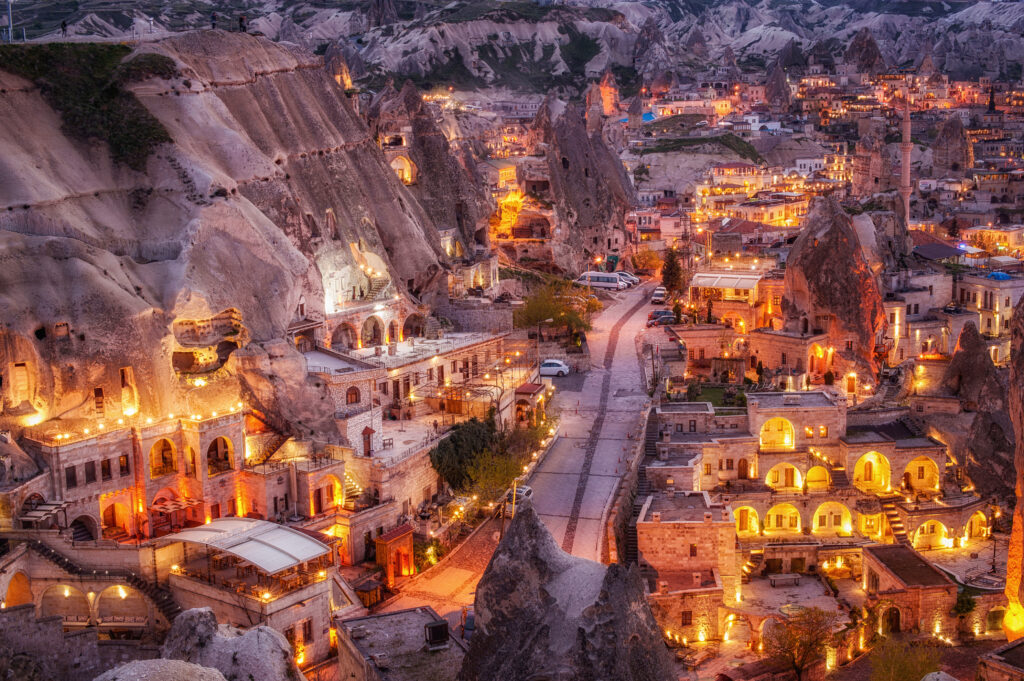
Both charming and resolutely tourist-oriented, Göreme has become a major tourist center in Cappadocia with its tufa houses. The famous open-air museum is within easy reach of the village. Here, you'll find a valley home to some 30 beautifully frescoed churches dating from the 10th and 11th centuries, as well as monasteries. Among them, the Church of the Loop (Tokalı Kilise) is the largest and most beautiful rock church in the region. It is divided into two parts: the old and the new. The frescoes in the old church (10th century) depict scenes from the life of Christ in a primitive style. The murals in the new church, painted on a bright blue background (late 10th/early 11th century), are of great artistic value.
The Capadocce offers breathtaking lunar landscapes for you to enjoy in Göreme. In fact, it's one of our top 10 incredible landscapes that don't seem to have come from our planet
6. Ürgüp, a major tourist center in Cappadocia
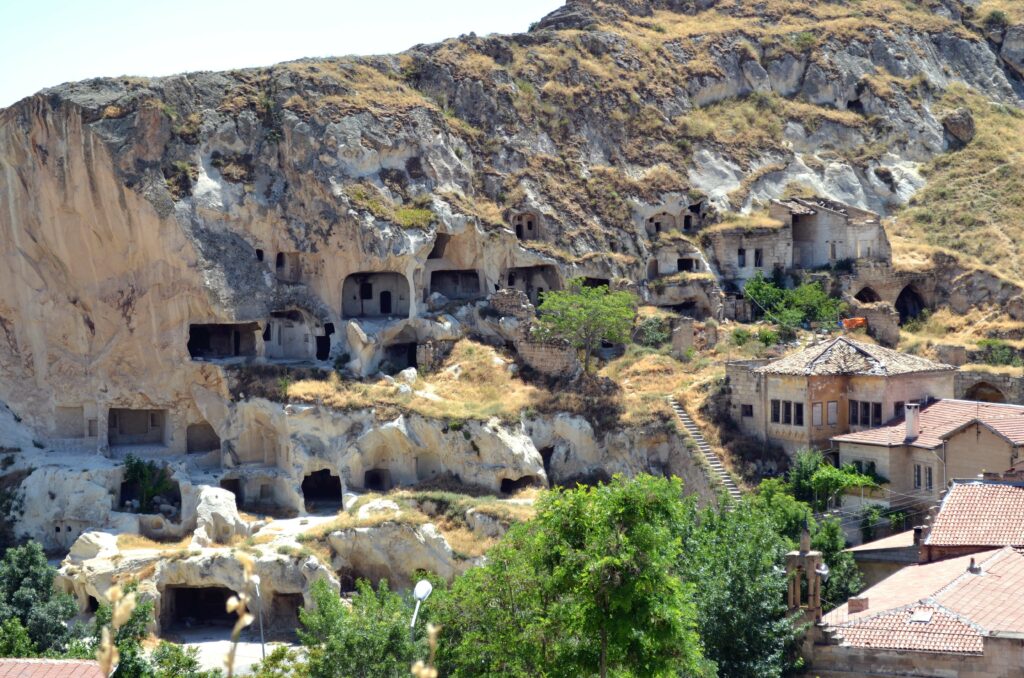
Nestled at the foot of a hollowed-out cliff, Ürgüp is a major tourist center, home to several troglodytic dwellings that are now unoccupied. Its many stores selling carpets, jewelry and handicrafts are sure to delight shoppers. This dynamic little town is an excellent base from which to explore the region. In winter, the inhabitants devote themselves to their traditional activities, and the atmosphere becomes much more intimate. The town is also the capital of an important wine-growing region. You can buy a few bottles at the winery at the entrance to the town.
Please note if you'd like to opt for a personalized travel itinerary in Cappadocia, we recommend that you request a free quote right here. A tailor-made, responsible trip, direct with the best local agencies, awaits you!
7. What to do in Cappadocia Visit Çavuşin
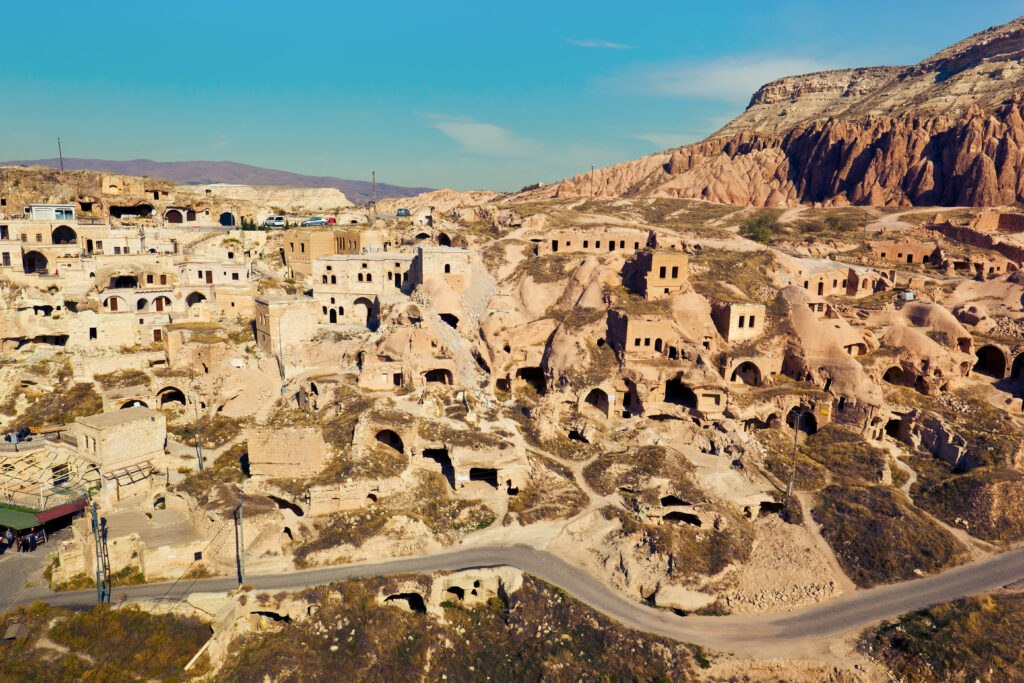
Nestled between Avanos and Göreme, this small village, originally carved into a rocky outcrop, has collapsed and been moved to the plain. Located in the heart of Cappadocia, it has miraculously preserved its authenticity. The post office only comes once a week, and the village square is alive with backgammon games and cups of tea. Souvenir stands bustle with activity as tourist buses arrive. The village is an ideal departure or arrival point for hikers, offering superb routes in the surrounding valleys: the Red Valley (Kızılçukur Vadisi), the Pink Valley (Güllüdere Vadisi) and the Meskendir Valley (Meskendir Vadisi).
Definitely, Cappadocia is a unique region in the world, deserving its place in our top list of the world's ideal destinations for romantic vacations.
8. Eğirdir for nature lovers
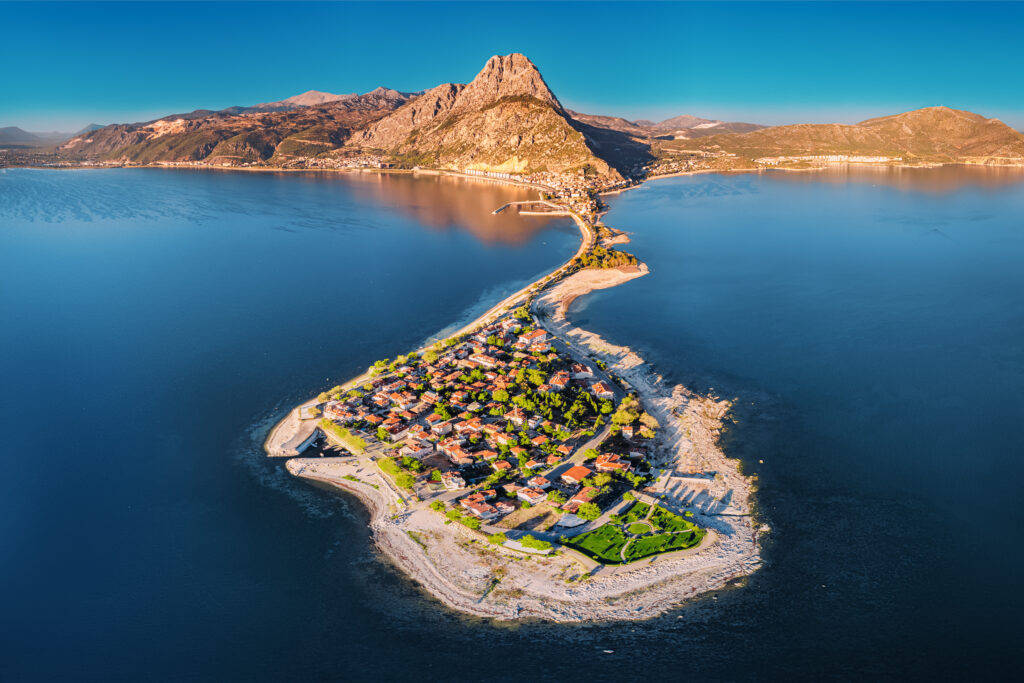
Located 25 km from Isparta, between the southern region (Kalkan) and Cappadocia, Eğirdir is a peaceful village in the Anatolian hinterland, nestled on the shores of a beautiful lake. It's an ideal retreat in a natural setting perfect for swimming, hiking, climbing, paragliding and boat trips on the surrounding lakes. Nature lovers will be delighted. The town is also home to a Byzantine fortress and Seljuk remains. Eğirdir is the ideal starting point for exploring the region's many points of interest.
9. Mustafapasa, a village far from mass tourism
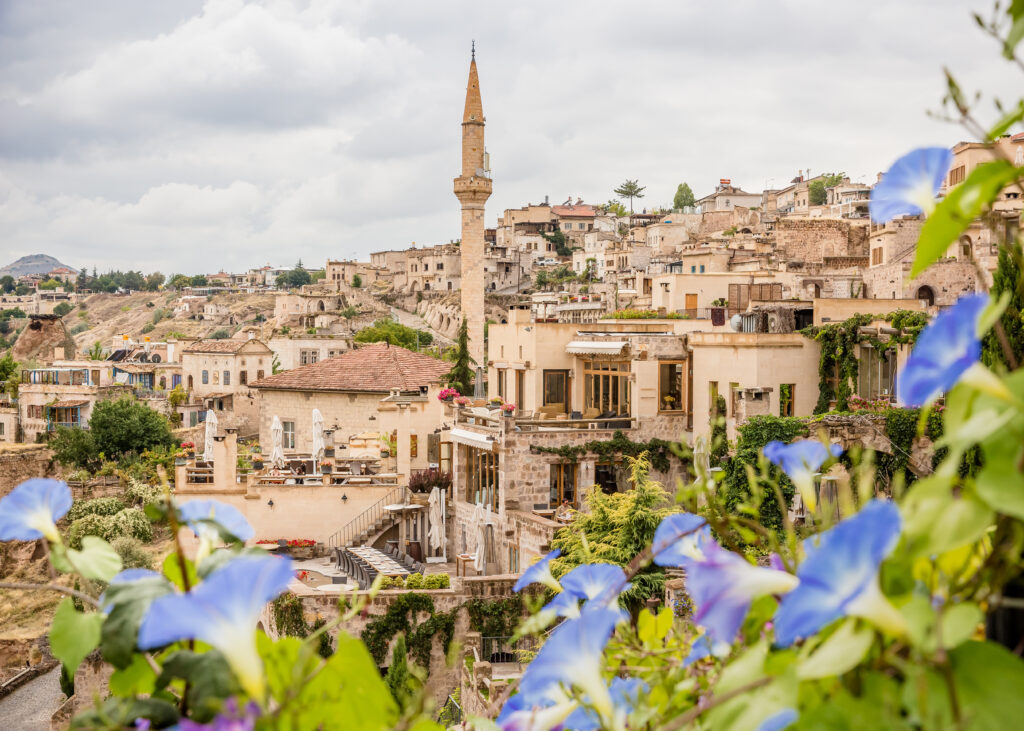
Located 6 km south of Ürgüp, Mustafapaşa was once inhabited by Greeks. Well-preserved houses and a few churches can still be found here. The village has escaped mass tourism, offering a rare and authentic setting. Mustafapaşa can be reached by dolmuş and municipal buses from Ürgüp. Here you'll discover splendid natural surroundings and plenty of opportunities for excursions. After visiting the village, don't miss the winding road along the green valleys and tufa cones. It leads into a grandiose landscape where cliffs rise majestically up to the Soğanlı Valley, a canyon worthy of American westerns.
10. Ortahisar, "the fortress of the middle"
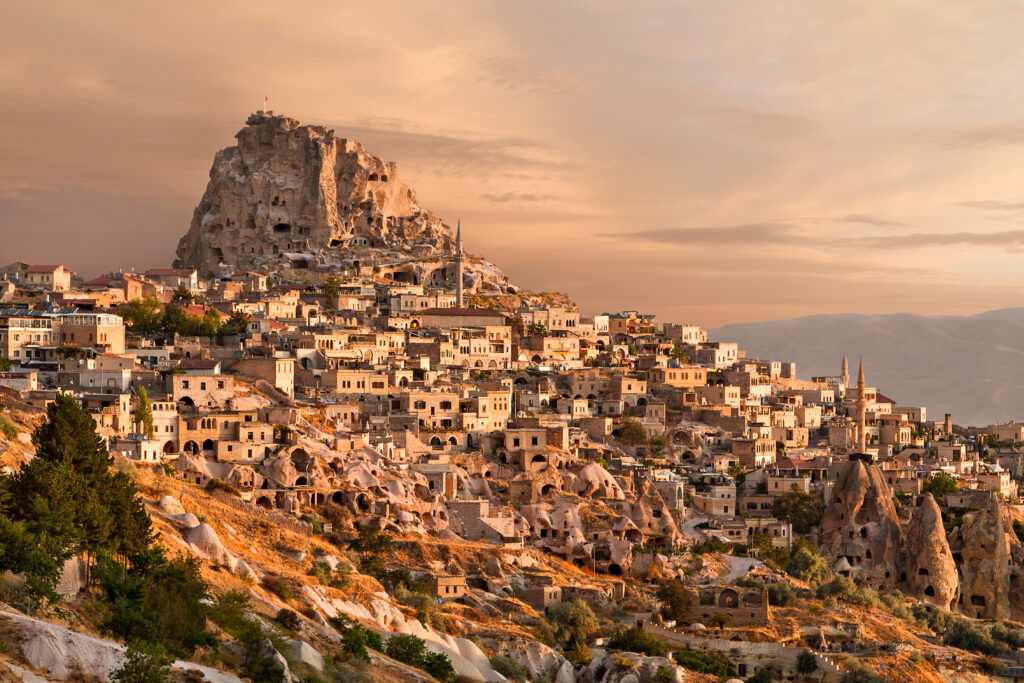
Nicknamed "the fortress in the middle",Ortahisar is probably the most authentic of the villages in the heart of Cappadocia. Only Çavuşin could compete with it. Although tourism is present, local life goes on quietly. Ortahisar is famous for its huge fruit and vegetable warehouses dug into the subsoil, whose ventilation shafts are visible. Its citadel, now closed, once served as a refuge for locals before the construction of traditional houses. Several churches are worth a visit, including the Cambazlı Kilise church, St. Basil's church and the barn-turned-church on Rue Ali Reis.
Did you know? One of the world's most unusual museums, the Hair Museum, is located in Avanos, Cappadocia! In a troglodyte house in Cappadocia, you'll discover almost 16,000 different types of hair from all over the world.
11. Van, a convenient rest stop
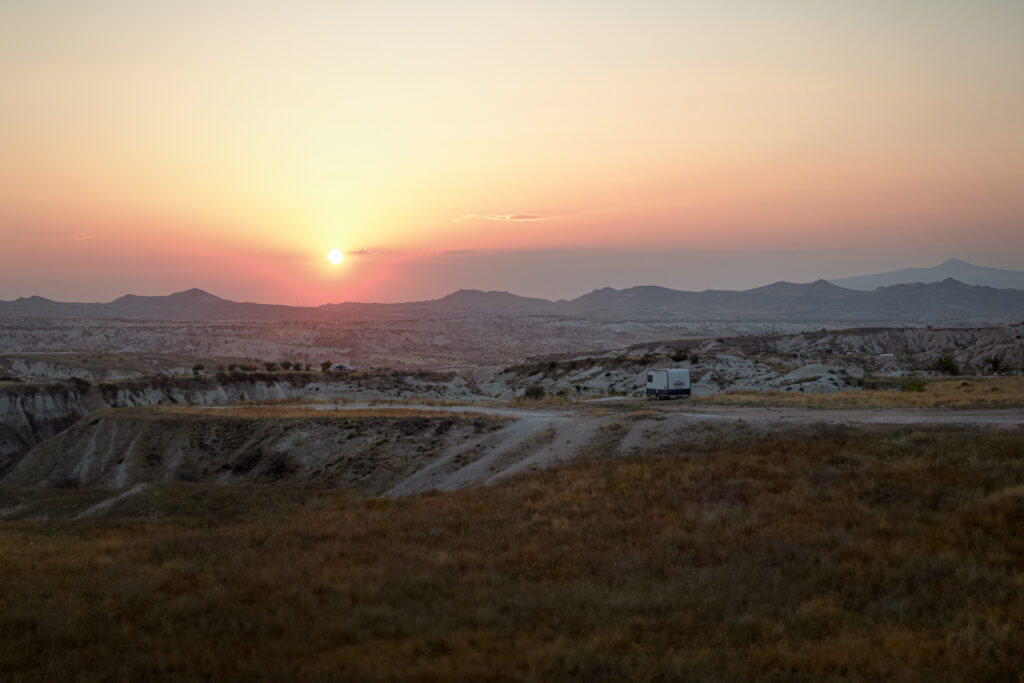
Situated to the east of the lake of the same name, Van is a modern town that makes a convenient rest stop on a trip to the region's more conservative villages. Measuring 120 km long and 80 km wide, Lake Van is the largest in Turkey and the second largest in the Middle East. It is famous for its magnificent blue waters. However, due to its high sodium content and local legends of a monster living there, we advise against prolonged swimming.
12. Sanli Urfa, one of the world's oldest cities
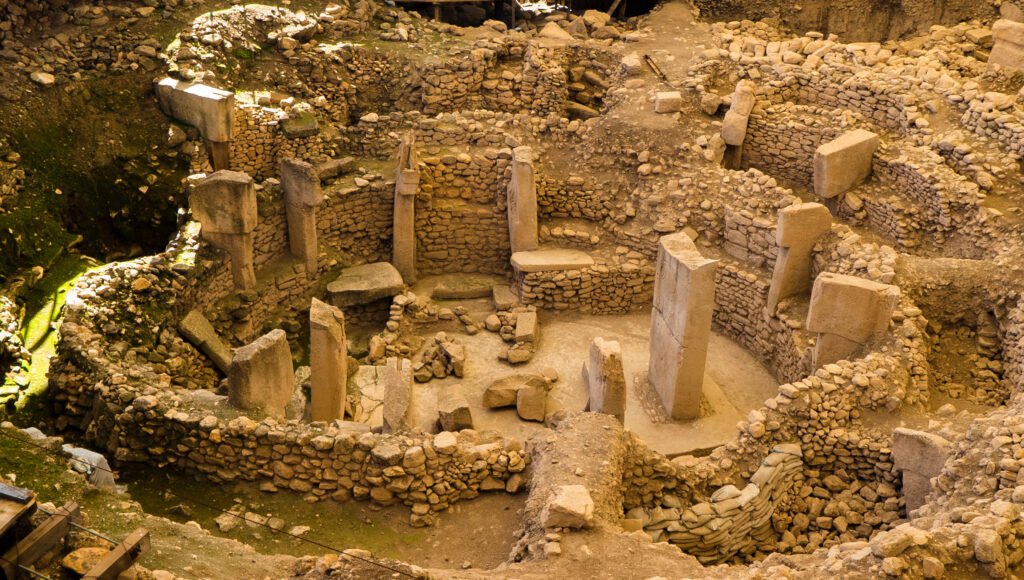
Nicknamed the "City of the Prophets", Şanlıurfa is one of the oldest cities in the world. It has a rich and tumultuous history. It is also an important pilgrimage site, home to the world's oldest known sanctuary, Göbekli Tepe. Much of the prehistoric cult site remains buried underground, but you'll see large ring-shaped enclosures and arrangements of rectangular pillars that may once have supported roofs. These would be the earliest archaeological evidence of religious practices. Whatever the case, this site is a testament to mankind's ability to create impressive monuments and to the long history of faith systems and their influence.
Good to know: If you're planning to visit the historic sites around Urfa, it's a good idea to stop off at the museum beforehand.
13. The underground city of Derinkuyu
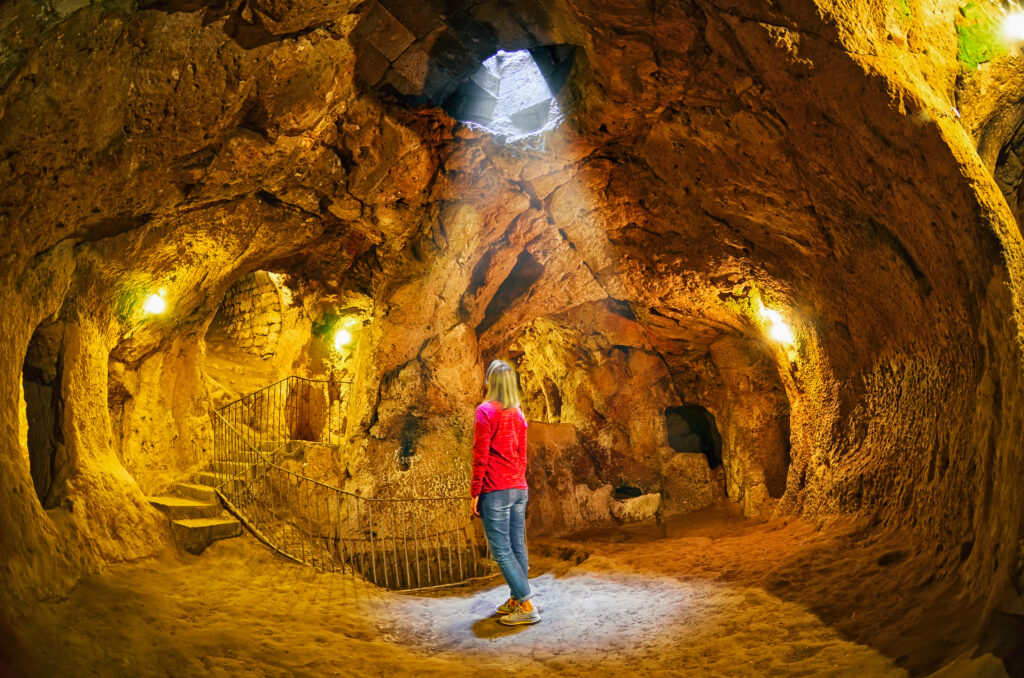
This is the deepest and largest underground city known to date, capable of housing up to 10,000 people. Sinking to a depth of around 85 meters, Derinkuyu is an underground city that offers a fascinating glimpse of all the rooms needed for life underground in the event of a threat. You'll see barns, canteens, food and beverage depots, wells, churches and ventilation tunnels. This exceptional tour is one of our most recommended experiences in Cappadocia. You'll love exploring the unlit conduits by flashlight, an exhilarating adventure!
To book: Discover the beauties of Cappadocia by booking this guided tour including the discovery of the underground city of Derinkuyu and the monastery of Selime.
14. The Pink Valley and the Red Valley: must-sees in Cappadocia
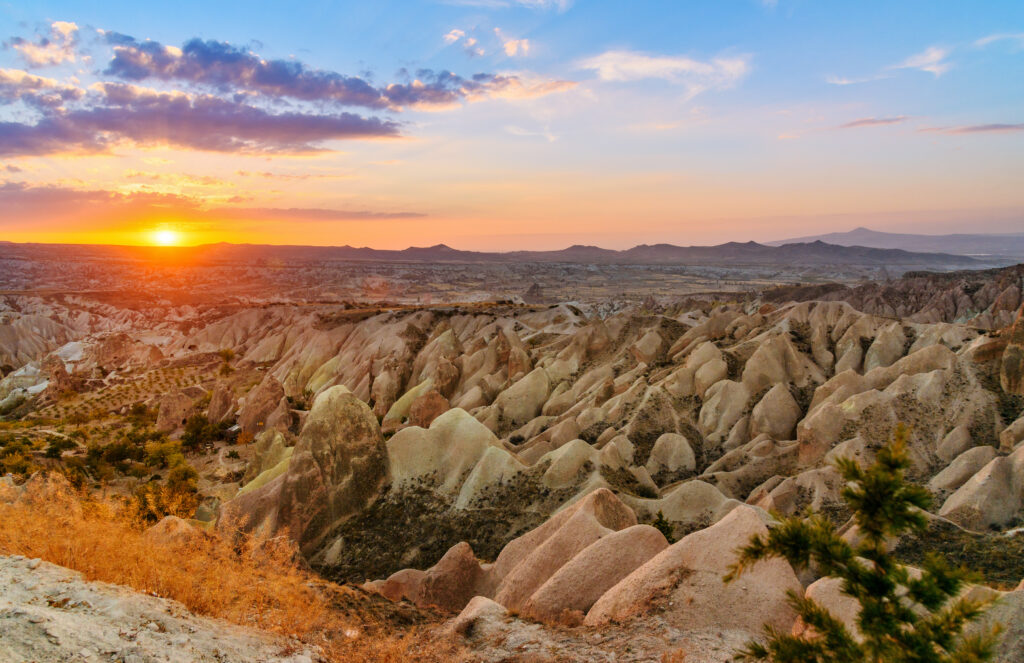
To visit Cappadocia without marvelling at the palette of flamboyant colors of the Pink Valley and the Red Valley would be unthinkable! Güllüdere and Kizilcukur are must-sees. Take a day to explore the characteristic relief of these sites. Setting off from Çavuşin or Günbatımı, located opposite Ortahisar, allow around three hours' walk to link the two points. The route is well signposted. You'll have the opportunity to venture around rocks to discover hidden churches, making this one of the region's most beautiful hikes.
To book: Go here to book this quad bike tour of Cappadocia's most beautiful valleys, crowned by sunset views from the Rose Valley. You'll also see the rock formations of the famous Amur Valley.
Worth knowing: From the Kızılçukur valley, past the Üzümlü church (the "grape" church), continue towards Çavuşin. From the Güllüdere valley, take the right-hand paths to the fork at Sütunlu church (the church with the columns). On the way, you'll see the church with the three crosses, the Ayvalı church, the church with the cross, the church of Joachim and Anne, and find two "buvettes" to rest in the shade.
15. Mardin's well-preserved traditional architecture
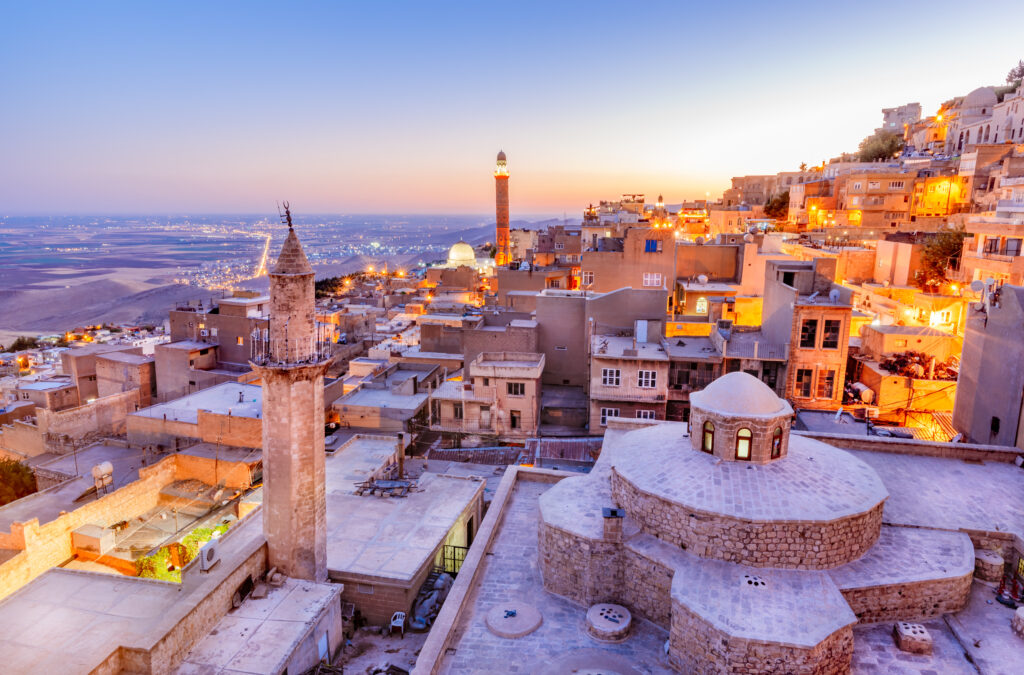
A UNESCO World Heritage candidate, Mardin is a must-see for any traveler exploring eastern Anatolia. The old town, perched on a hillside up to 1,300 meters above sea level, is easily discovered on foot via endless staircases offering breathtaking panoramic views of the surrounding plains. Thanks to its well-preserved traditional architecture, you'll be able to admire a succession of ancient houses in carved stone, as well as a number of historic monuments, churches and mosques. In stark contrast to the concreted seaside resorts of the south of the country, this charming little Mesopotamian town is sure to win you over.
16. What to do in Cappadocia Taste typical Turkish culinary specialties

Cappadocia doesn't just offer breathtaking scenery and fascinating historical sites; it's also a true paradise for food lovers. Tasting the local culinary specialties is a must during your stay. Among the dishes not to be missed, testi kebab, a meat and vegetable stew cooked in an earthenware jar, is a veritable explosion of flavors. Mantı, Turkish ravioli served with a yoghurt and garlic sauce, are also a delight. For those with a sweet tooth, baklava, a dessert made with filo pastry, nuts and syrup, is a must. And don't miss an authentic Turkish coffee, prepared with care and often accompanied by loukoums.
Getting around in Cappadocia
Getting around Cappadocia is relatively easy, thanks to the many transport options available. Here are some of the main ways to explore the region:
- Rental car: Renting a car is a practical option for those wishing to explore Cappadocia at their own pace. It allows great flexibility in visiting the various sights and villages.
- Bus and minibus (dolmuş): Buses and minibuses arecommon and economical means of transport in Cappadocia. They connect the region's main towns and villages, such as Göreme, Ürgüp, and Uçhisar. Dolmuş are shared minibuses that follow fixed routes and are often used for short trips.
- Cabs: Taxis are available in the main citiesand can be a convenient option for one-off journeys or to get to more remote sites.
- Organized tours: Many travel agencies offer organized tours of Cappadocia. These tours usually include transport, guided tours and sometimes even meals, which can be a comfortable option for those who prefer not to plan their own trips.
Is it safe to go to Cappadocia?
Cappadocia is generally considered a safe destination for travelers, but as with any tourist destination, it's important to take certain precautions. Activities such as hiking, climbing and hot-air ballooning are popular in Cappadocia. Make sure you choose reputable operators and follow safety instructions to minimize risks. It is also advisable to take out travel insurance to cover medical expenses. Although medical facilities are generally good, it's always wise to be prepared.
Petit Futé tip: Take advantage of a discount by booking your travel insurancehere, and leave with peace of mind!
Finally, Cappadocia is a conservative region. It's important to respect local customs, particularly in terms of dress and behavior, especially when visiting religious sites.
So, are you tempted? Take a look at our airfares and book now !


